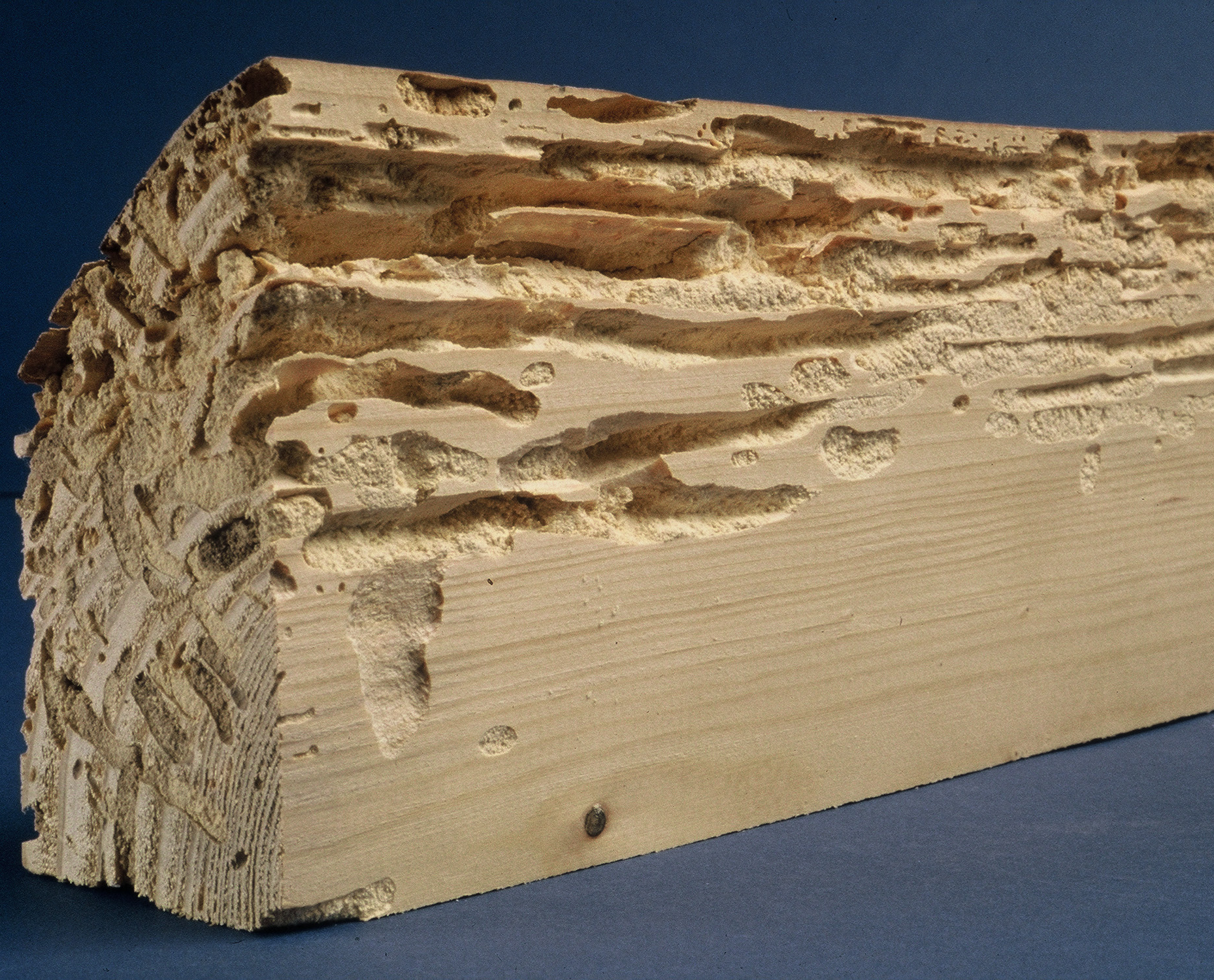Families of wood-eating insects – The capricorn beetle

The house longhorn beetle or Hylotrupes bajulus is the larvalwood-eating insect most often found on dry wood.
This insect has the longest cycle length, averaging 3 to 5 years, but cycles of up to 10 years have been recorded. During this period, only a few weeks are spent in its egg, nymph or perfect insect state (adult, imago). For the rest of the time, the larva, which grows from 3 mm at birth to almost 3 cm at the end of its larval period, nibbles away at the wood of the frame in which it is installed.
The house longhorn beetle only attacks softwoods (pine, fir, spruce, etc.). Unfortunately, it has a little cousin called Hesperophane, which only attacks deciduous trees. All species are therefore affected.
How do you recognise the house longhorn beetle?
- The finest ears will be able to hear the sound of the larva in action
- The outlet at the end of the cycle is characteristic: the holes are oval in shape, 8 to 10 mm in diameter
- The vermould is in the shape of small barrels
What should be done if there is a presence in the roof structure?
Call in a treatment professional, who will choose the technique best suited to curative and preventive treatment of structural wood. There are at least two:
- drilling and injection is a historic and effective method,
- for some years now, a new technique has involved applying a curative gel. This method, which is just as effective, avoids drilling into the wood. The aesthetics of the structure are not affected.
Beware of preconceived ideas: It is said that certain species are naturally durable; Douglas fir has this reputation. Although this species is resistant to fungi, it is vulnerable to attack by house longhorn beetles. We’ll look at this in a later sequence.
All our news
All our news



